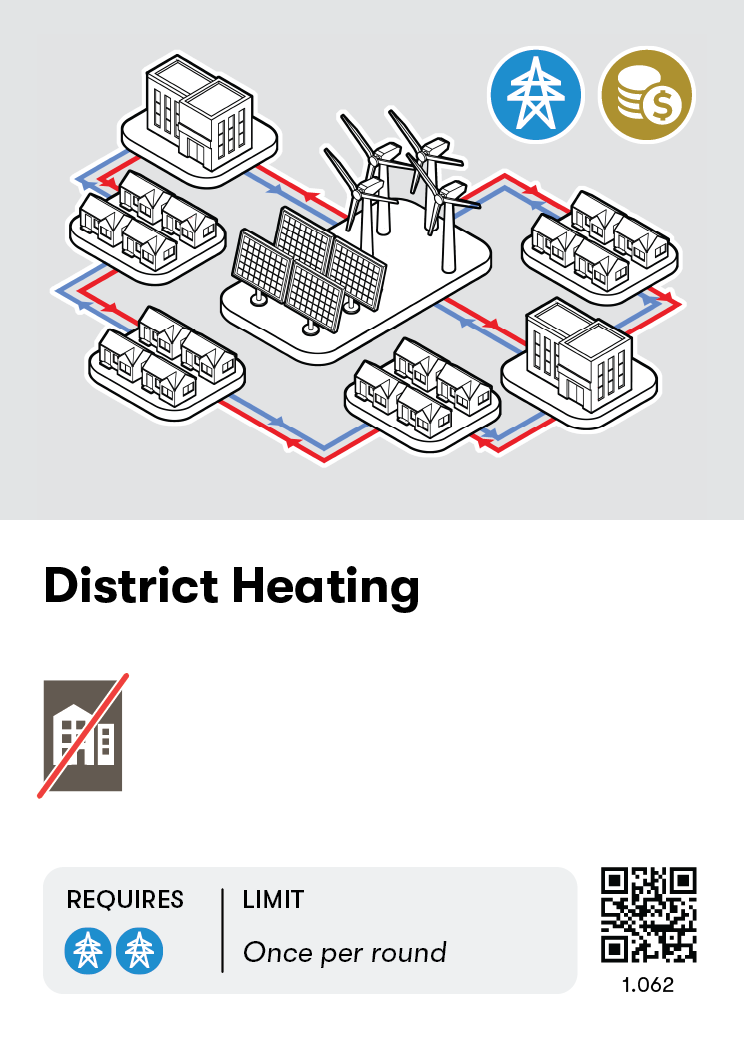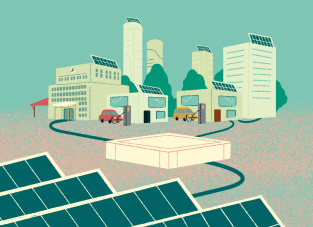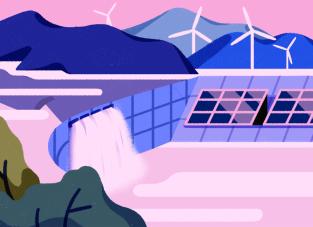District Heating
Local Project
Rather than installing separate boilers, we can reduce the climate impact of heating by connecting adjacent buildings with insulated underground piping and running hot water from a larger main boiler that services all of them at once.
District heating is most beneficial in cold climates. It also helps if buildings are clustered closely together, minimizing the amount of piping and pumping energy required. District heating’s beneficial impact can be multiplied many times over if the hot water comes from geothermal sources, waste heat generated by industrial processes, the sun, or biomass burning rather than heat generated by burning fossil fuels. Installing district heating when an area is undergoing other infrastructure work (when replacing water or sewer systems, for example) is often cheaper and more convenient too.
Challenges include the coordination of heating among different building owners, high upfront installation costs, and the potential to impact multiple buildings at once if the wider system goes down. Still, as communities and businesses transition to climate-friendly ways of generating and using energy, district heating is worth consideration.
You must have 2 Grid tags in this card's stack to take this action.
Remove 1 Buildings emission token from your player board.
You may take this action once per round.

District Heating (Project Drawdown)
District heating (Wikipedia)
District Heating (International Energy Agency, IEA)
If your urban area is undergoing infrastructure upgrades, encourage planners to consider district heating.
If your campus or community uses district heating, encourage it to shift the energy source toward renewables — using renewable heat sources, or using electric power derived from renewables to run the system.



